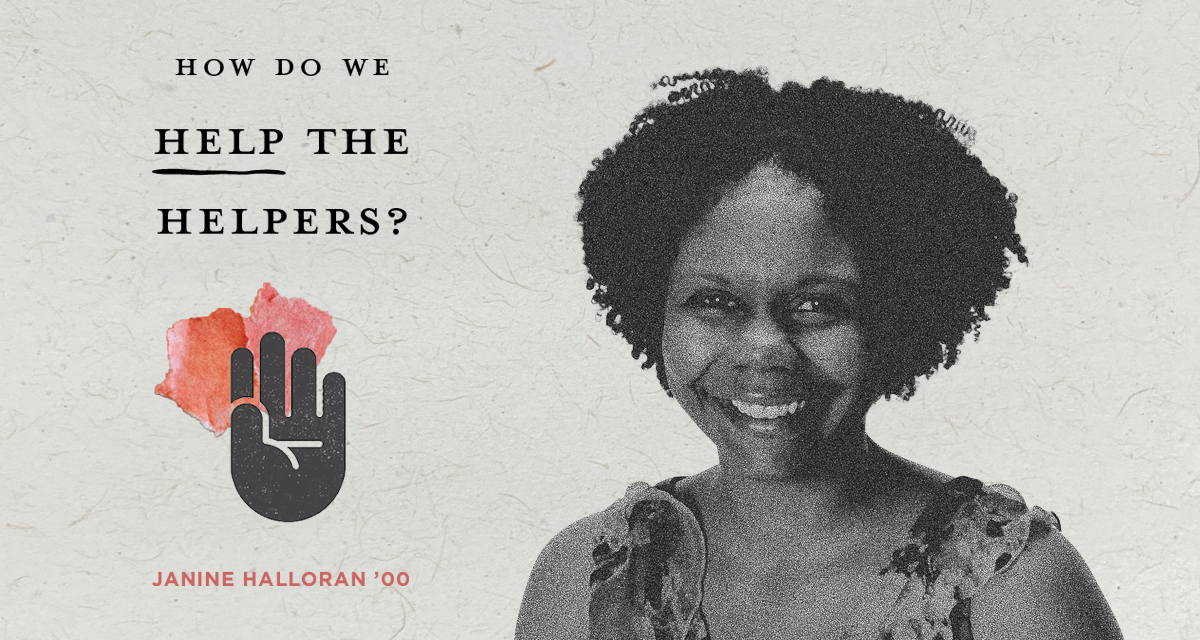How to Cope When Life is Hard
A version of this article originally appeared in the fall 2022 issue of STILLPOINT magazine.
When chaos and calamity feel too close for comfort, Janine Halloran ’00 (psychology) takes a deep breath and begins sorting the swirling anxieties and fears. “What can I control, and what can’t I control?” she asks herself. “I cannot control wars overseas or a global pandemic or climate change, but I can control my response. I can control my behavior, my actions and my thoughts, and that is what I focus on.”
She remembers being coached through this approach by her therapist in high school, and decades later, Halloran is coaching children and teenagers to do the same. It’s a coping skill, she explains, and one of dozens that she outlines in her #1 Amazon bestseller, The Coping Skills for Kids Workbook, and The Coping Skills for Teens Workbook. “They are safe, healthy strategies for self-regulation. People can use them when they feel overwhelmed, stressed, anxious and angry, whether it’s over something small or something huge,” explains Halloran, a licensed mental health counselor and owner of Coping Skills for Kids.
Learning and implementing these types of strategies pays dividends. “Research shows that if you focus on kids’ social and emotional learning, their academic performance increases by 11 percentile points,” she says.
Halloran has grouped common coping styles into five major categories: relaxation, distraction, movement, processing and sensory. “For some people, mindfulness is amazing for managing daily anxiety. For other people, moving their bodies is what’s going to shake feelings of anger or angst. For other people, reading a book is really going to be magical because it gives them a break from being overstimulated. Others enjoy working with their hands as an outlet for stress,” she explains. Everyone’s way of coping is different, but Halloran suggests that everyone— kids and adults alike—find what works for them and use it.
“We can’t fill from an empty cup; we need to recharge ourselves, especially now,” she says. “There’s an intensity to life, but it’s at a whole new level after living in a pandemic.” So, Halloran is channeling lessons learned from her 20 years of working with families to develop a new coping skills workbook—this time, for adults. Post-pandemic, Halloran says, the “helpers”—parents, teachers, counselors, therapists, nurses—are the ones who need the help.
Helpers have immense power in shaping students’ lives, for good or for ill. So, caring for the helpers is Halloran’s newest way of caring for the kids to whom she has dedicated her career, including her own kids.
“You think, especially when kids get to be teenagers, they’re not watching you,” she says. “But they absolutely are paying attention not only to your words but to your actions.” To practice what she preaches, Halloran keeps a checklist of the coping skills that work for her and references it daily, often after prompting from her two teenagers who notice when she needs a break. Take a walk. Play a video game. Color.
And she holds 2 p.m. free on her calendar every day for family decompression time. It’s the sweet spot between school and work and evening activities when her middle schoolers can dish up the drama from the day and have what she calls “a feelings check-in.” Holding sacred time together and normalizing conversations about emotions keeps the Halloran home feeling safe, connected and calm. She wants this for other families, too. “I have it on my heart to write this book because I’m seeing that families are feeling overwhelmed. I’m hearing it all the time,” she says. “They’re overwhelmed. They’re stressed. They don’t know what to do.”
Take a deep breath, remember what you can control, and then visit www.janinehalloran.com
 The Bell
The Bell